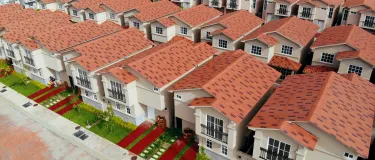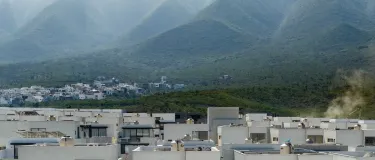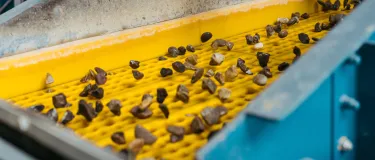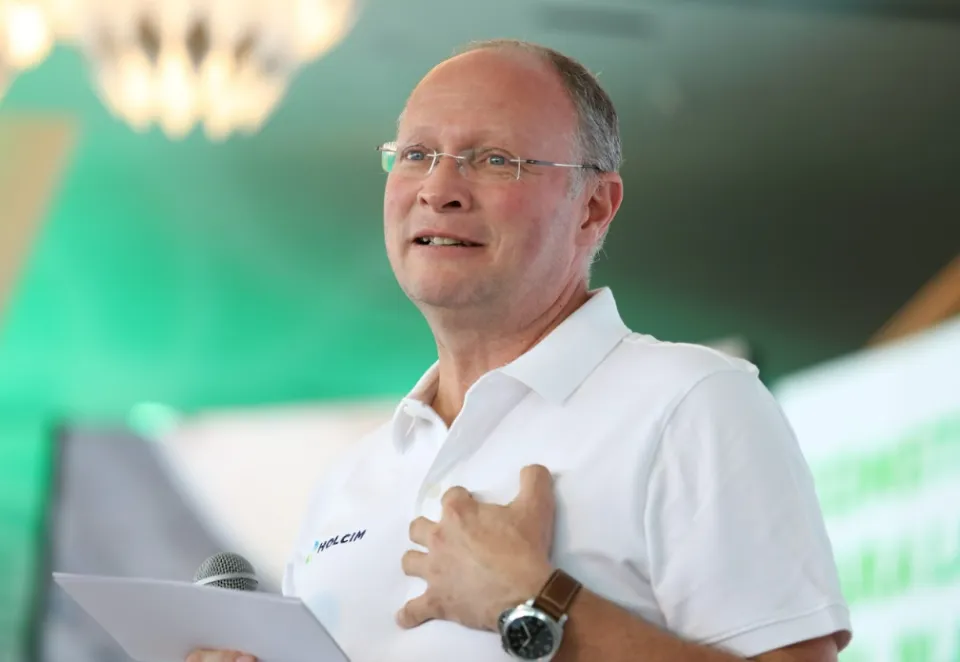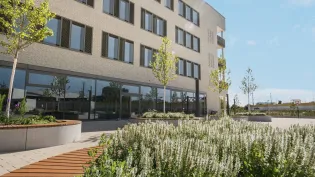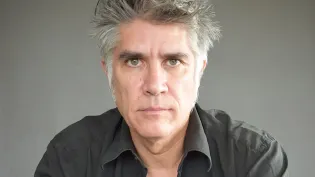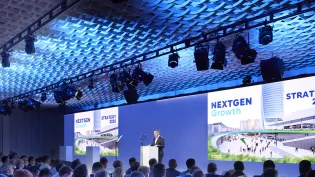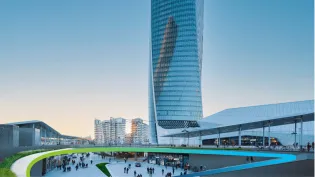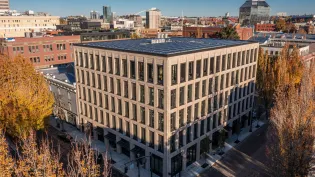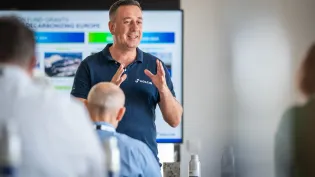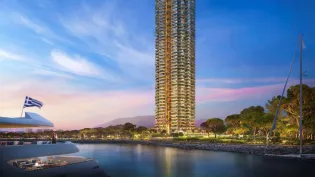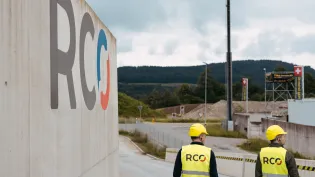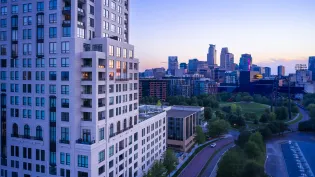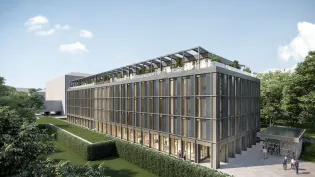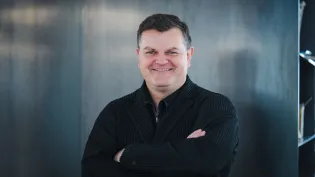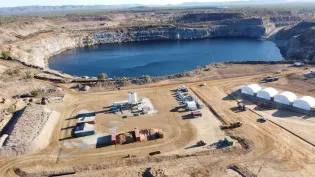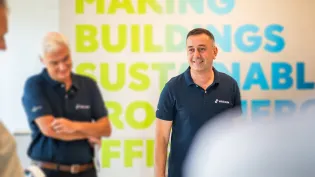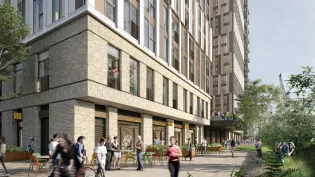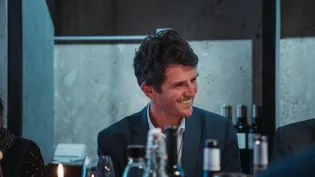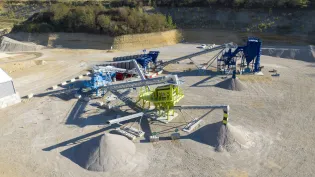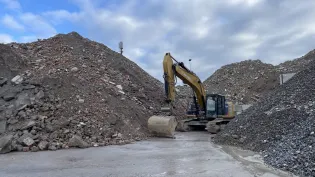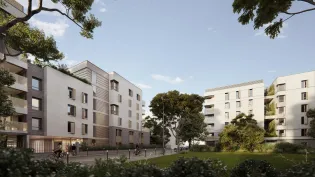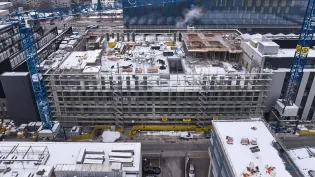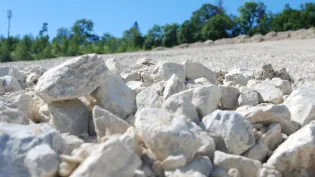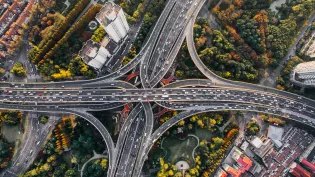Latin America is the second most urbanized region in the world, with over 80% of the population living in cities.
According to the Ellen MacArthur Foundation, the transition to a circular economy presents a unique opportunity to preserve the region’s incomparable biodiversity while building thriving local economies.
Holcim tackles Latin America’s exceptionally high urbanization with low-carbon and circular construction that builds long-term progress and prosperity. To make construction circular across its lifecycle, Holcim is reducing the footprint of buildings, recycling to build new from old, and regenerating ecosystems.
Watch our video to explore our approach to low-carbon and circular construction in Latin America.
Reducing the footprint of buildings across the lifecycle involves lowering emissions from our operations, as well as deploying low-carbon, smart and energy-efficient building solutions at scale.
This starts with our formulation expertise. We offer the industry’s broadest range of alternative materials thanks to using innovative low-emission raw materials from calcined clay to construction demolition materials (CDM), to decarbonize our concrete and cement mixes.
We are making sustainable construction possible at scale around the world, from Zurich to New York and Mexico to Manila, with our low-carbon building materials. We offer the world’s broadest ranges of low-carbon concrete with ECOPact and low-carbon cement with ECOPlanet, delivering 100% performance with at least 30% less CO2, in line with the most advanced sustainability certifications, from LEED and BREEAM to WELL.
In Mexico we launched the first calcined clay cement made by Holcim in Latin America. It is produced in a cutting-edge manufacturing line, using proprietary technology to produce low-carbon cements with locally sourced materials and offering up to 50% less CO2.
ECOPact low-carbon concrete is available in all markets in the region, enabling customers to reduce their projects’ embodied carbon by at least 30% with no compromise in performance. GP Vivienda, one of Mexico’s largest real estate developers, used it across 12 residential developments around Monterrey. ECOPact was also used in Casa Laguna, Ecuador’s largest affordable housing project.
And with the construction of the Aña Cuá dam, a new hydroelectric development on the border between Argentina and Paraguay, ECOPact is also reducing emissions in key infrastructure projects.
The Cosmopolitan Skyline tower in Tijuana, Mexico was built with DYNAMax, the ultimate performance concrete, which reduces buildings’ overall footprint by using minimum materials for maximum strength.
Mexico's landmark Libertad Dam will supply much needed freshwater from the Potosí River basin to Monterrey and other nearby cities that are experiencing a boom in industrial activity. ECOPact accounted for 90% of the concrete supplied (or 1.1 million m3), saving some 80,000 tons of CO2, or the equivalent emissions from 10,000 homes per year.
DIGITALIZATION
Digitalization is another way we are enabling circularity in construction by reducing material use and waste.
Holcim Ecuador inaugurated the company's new technological innovation center. It includes the region's first 3D metal printing lab, which will help reduce material use, and allows us to convert traditional industrial facilities into Plants of Tomorrow.
ConcreteDirect is the industry’s leading ready-mix management platform for more efficient, safer and environmentally friendly concrete use at every jobsite. In Mexico, the app has an adoption rate of 82% and is being rolled out in Ecuador, Colombia and El Salvador.
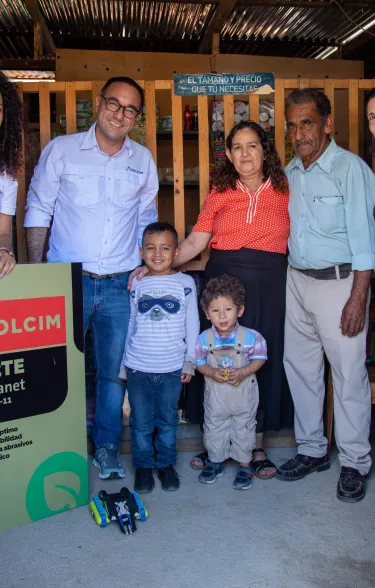

MAKING SUSTAINABLE CONSTRUCTION ACCESSIBLE TO ALL
In Latin America, approximately 20% of the urban population lives in informal settlements, characterized by low‐quality resource‐intensive housing. Such dwellings can consume twice as much construction materials as a formal dwelling and generate a larger carbon footprint.
Holcim and Habitat for Humanity have entered a partnership to accelerate access to affordable housing driven by an innovative digital platform. Together they are deploying an online affordable housing portal to enable low-income families to access finance as well as building materials and solutions in a safe and seamless way. The first project was rolled out in Mexico and is enabling the affordable renovation of 600 homes in the Bajio and Veracruz regions. The ultimate goal of this partnership is to enable a sustainable and healthy built environment where everyone has a decent place to live.
IMPROVING LIVING STANDARDS
Holcim Nicaragua, in partnership with Habitat for Humanity and the Inter-American Cement Federation, is carrying out the “100,000 Floors to Play” project, which aims to replace 100,000 dirt floors with concrete floors in vulnerable housing in Latin America and the Caribbean by 2028. Today, thanks to Holcim's support, 60 families from different neighborhoods in the Nicaraguan town of Estelí now have a concrete floor, allowing them to have a better quality of life.
In 2022, Fundación Holcim Argentina reached more than 290,000 people through 15 programs that seek to support Holcim's commitment to build progress for people and the planet with the support of more than 40 strategic alliances. For example, together with Habitat for Humanity Argentina, the “+ QUE UN BAÑO COMUNITARIO” program made sanitation a priority to help further Goal 3 of the UN’s Sustainable Development Goals by organizing sanitation workshops and delivering of complete bathroom kits for families in Campana.
Read more about the “100 Floors to Play” project (article in Spanish)
SOLUTIONS & PRODUCTS FOR SUSTAINABLE BUILDINGS
Holcim’s Solutions & Products, from roofing to insulation, are making buildings more sustainable in use, driving energy efficiency and green retrofitting to reduce operational emissions. In Latin America, our product portfolio includes GacoFlex, consisting of around 30 different products in Mexico, Colombia, Ecuador and Argentina that range from liquid waterproofing to sealants and paints.
Airium, our mineral insulating foam technology, is available in northern Mexico and will expand the availability of Airium-based systems throughout the country in 2023. Test studies in Mexico show that in a typical house of about 100 square meters, 12 centimeters of Airium on a flat roof means a family can achieve energy savings of approximately 48% – or close to US $1,500 per year – something that benefits people and the planet. On flat roofs, it is the first time that Holcim is offering an integrated system to developers: Airium for insulation and GacoFlex for waterproofing.
In 2022, Holcim recycled almost 2 million tons of material in Latin America. Much of that was done thanks to Geocycle, which helps put Holcim at the forefront of transforming waste into resources.
In El Salvador, we are building our own ready-mix concrete plant exclusively with ECOPact⁺, which contains 12% recycled construction demolition materials (CDM) from other ready-mix concrete plants, reducing its carbon footprint by at least 30%.
Inversiones Bolivar, a major real estate developer in the country, will be the first client to use ECOPact⁺ in a luxury apartment project, closing the loop by providing its own CDM for Holcim to recycle and create new aggregates that will be incorporated into the production of the concrete.
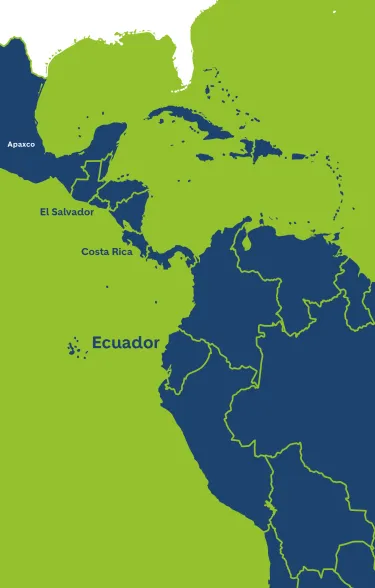






COLLABORATING WITH MUNICIPALITIES AND OTHER ORGANIZATIONS
Holcim collaborates with municipalities and organizations across Latin America to turn waste at the end of its lifecycle into alternative raw material or sources of energy.
COSTA RICA
In 2022 we diverted more than 48,000 tons of municipal waste from landfilling and used it to generate 30% of the thermal energy needs for the Cartago cement plant in Costa Rica.
ECUADOR
In Ecuador, we signed a partnership agreement with the Mayor's Office of Santa Cruz, the most populated island of the Galapagos archipelago, to manage its waste. In the first stage, a pilot test will be carried out with 10 vessels containing several containers, each able to recover 75 tons of waste.
MEXICO, COSTA RICA, ECUADOR AND EL SALVADOR
Geocycle supports Nestlé on the road to achieving 100% plastic neutrality in Mexico, Costa Rica, Ecuador and El Salvador, a partnership through which a total of nearly 30,000 tons of post-consumer plastic have been recovered.
MEXICO
In Apaxco, Mexico Geocycle safely turned some 72,000 tons of contaminated soil into an alternative raw material to produce circular cement.
2 MILLION TONS OF MATERIALS
RECYCLED BY HOLCIM IN LATIN AMERICA


REGENERATING ECOSYSTEMS TO PRESERVE OUR PLANET
At Holcim, we are committed to contributing to a nature-positive future. Whilst some of our building solutions, like green roofs and the permeable concrete Hydromedia, contribute to bringing nature into cities, making them cooler, cleaner and greener, we are also actively restoring and regenerating ecosystems that have been affected by human activity.
In Ecuador, we’re playing a key role in preserving the Cerro Blanco forest. Located just outside the city of Guayaquil, this protected forest is home to more than 1,400 diverse species of flora and fauna (many endemic to the forest) and is considered the “Lung of the City”.
In El Salvador, our people volunteer their time to help the environment and raise awareness about the importance of preserving ecosystems. On World Environment Day, Holcim employees and their families typically spend the day cleaning a 2-kilometer stretch of the San Diego Beach, an important habitat for sea turtles, and collect more than 600 kilograms of waste.
Costa Rica is one of the most biodiverse places on the planet, that’s why our teams are making quarry rehabilitation a priority there. Since 2015, we have restored more than 17 hectares around three of our quarries in the Cartago province by planting native plant species. As a result, many animal species have returned, while the rehabilitated area itself has gradually joined the surrounding wooded areas.





